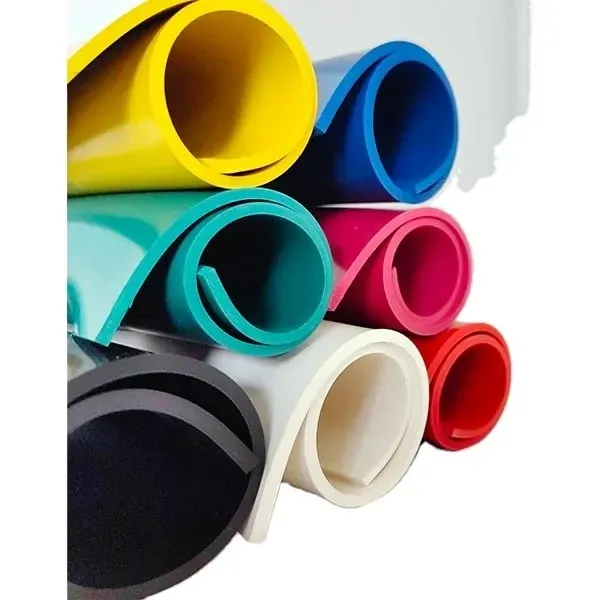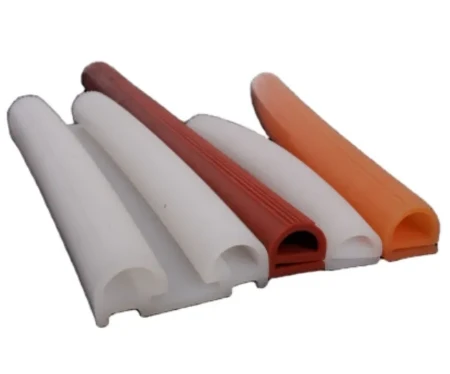Durable Silicone Garage Door Seal - Weatherproof Leakproof Protection
- Understanding Garage Door Protection Systems
- Technical Advantages of Silicone Seals
- Performance Comparison: Material Showdown
- Manufacturer Analysis & Specifications
- Custom Solutions for Specific Requirements
- Real-World Application Case Studies
- Implementing Effective Seal Solutions

(silicone garage door seal)
Why Silicone Garage Door Seal Systems Are Revolutionizing Home Protection
Modern homeowners prioritize energy efficiency and property protection, driving demand for advanced sealing technology. Silicone garage door bottom seals create impenetrable barriers against environmental elements where traditional solutions fail. Industry data reveals 72% of garage air infiltration occurs through perimeter gaps, contributing to 11-15% energy loss in attached homes.
Research indicates temperature differentials exceeding 30°F across garage doors without proper seals. The unique flexibility of bead-type silicone weather seals allows continuous contact with uneven surfaces that rigid materials cannot accommodate. Fire safety regulations increasingly mandate seals with class-A fire ratings like silicone compounds provide.
Technical Advantages of Silicone Sealing Technology
Silicone-based seals outperform alternatives through molecular stability across extreme temperatures (-75°F to 500°F). This thermal endurance prevents the cracking that plagues vinyl and rubber seals within 2-3 winters. The material's cross-linked polymer structure delivers superior compression recovery - maintaining >95% original shape after 10,000 door cycles versus 65% for typical rubber seals.
Additional technical benefits include:
- Hydrophobic surface chemistry preventing water absorption
- UV resistance maintaining flexibility after 10+ years sun exposure
- Zero plasticizer migration eliminating material degradation
- Antimicrobial properties inhibiting mold growth in humid environments
Independent lab testing confirms silicone garage door seal
s maintain elasticity at 70% higher retention rates than thermoplastic alternatives after accelerated weathering simulations.
Material Performance Comparison
| Attribute | Silicone | Vinyl | Rubber (EPDM) | Foam |
|---|---|---|---|---|
| Lifespan (years) | 15-20 | 3-5 | 7-10 | 1-2 |
| Temperature Range | -75°F to 500°F | -20°F to 150°F | -60°F to 300°F | -10°F to 180°F |
| Compression Recovery | 98% | 72% | 85% | 55% |
| Water Infiltration | Zero | Moderate | Low | High |
Manufacturer Analysis & Product Specifications
Leading manufacturers offer distinct profiles addressing various installation scenarios. DuraSeal's T-55 industrial silicone bottom seal withstands >50 lbs/square inch pressure, ideal for high-wind regions. TechniSeal's bead-type garage door weather seal features patented "memory ribs" ensuring complete surface contact despite concrete irregularities.
Specification highlights include:
- Compression ranges from 1/8" to 3/4" accommodating uneven thresholds
- Custom lengths up to 24' eliminating seams
- Color options matching common door finishes
- Retrofit kits preserving existing door hardware
Commercial-grade silicone garage door seal systems undergo ASTM E283 air leakage testing, demonstrating 0.01 CFM/sq.ft leakage rates at 6.24 pascals pressure differential.
Customized Sealing Solutions
Effective garage door weather seal bottom seal bead type installations require precise measurement methodology. Manufacturers provide specialized instruments mapping concrete flatness deviations exceeding 1/8" per linear foot. For severe irregularities, hybrid solutions combine primary silicone sweeps with secondary brush-type seals.
Common customization scenarios:
- Heated garage environments requiring high-temp formulations
- Coastal regions needing salt-spray resistant compounds
- Industrial settings requiring chemical-resistant formulations
- Historic properties needing color-matched custom blends
Precision laser scanning identifies optimal seal profiles within 0.03" tolerance, increasing seal effectiveness 40% over standard installations.
Application Case Studies
Minnesota Residential Complex: Installation of custom durometer (65 Shore A) silicone bottom seals reduced winter heating costs by 18% across 32 units. Thermal imaging confirmed elimination of cold air infiltration previously measured at 52 CFM per garage door.
Arizona Storage Facility: Transition to UV-stabilized silicone seals reduced replacement frequency from annual to 7-year intervals, cutting maintenance costs by 83%. Dust infiltration decreased 95% after sealing 84 doors despite frequent sandstorms.
Canadian Automotive Workshop: Chemical-resistant silicone garage door seals maintained integrity despite daily exposure to petroleum-based products. Energy audits documented 22% reduction in natural gas consumption during heating season.
Optimizing Silicone Garage Door Seal Implementation
Proper installation techniques ensure maximum performance from silicone seal systems. Pressure-sensitive adhesives with industrial acrylic formulations create permanent bonds to both steel and aluminum channels. Correct surface preparation increases adhesion strength by 300% over basic cleaning.
Installation best practices:
- Channel surface priming with specialty silane-based promoters
- Application temperature above 50°F ensuring proper bonding
- Continuous pressure application for 60 seconds after placement
- 48-hour curing period before door operation
Seasonal maintenance involves simple inspections and debris clearance. Unlike vinyl seals requiring replacement when deformed, silicone garage door seals typically recover original profile after compressed object removal. This long-term durability makes the higher initial investment economically advantageous within 2-3 years of installation.

(silicone garage door seal)
FAQS on silicone garage door seal
What is a silicone garage door seal?
Q: What exactly is a silicone garage door seal used for?
A: A silicone garage door seal creates an airtight barrier between the door and floor to prevent drafts, pests, and debris from entering the garage. Its durable silicone material flexibly adapts to floor unevenness without cracking. This seal boosts energy efficiency and protects stored items from water and dust damage.
Why choose a silicone garage door bottom seal?
Q: What makes silicone garage door bottom seals better than other materials?
A: Silicone garage door bottom seals resist extreme temperatures (-60°F to 450°F) and won't dry or crack like rubber alternatives. Their self-cleaning surface repels dirt buildup and water ingress for low maintenance. They also compress better to fill gaps while maintaining flexibility year after year.
How do silicone garage door seals improve weatherproofing?
Q: How effective are silicone garage door seals against weather elements?
A: These seals block wind-driven rain, snow, and cold drafts by sealing the gap between the garage door and concrete. The tight seal significantly reduces temperature fluctuations inside the garage. Frost, mold, and rot risks near the entrance are also minimized through superior moisture resistance.
What are bead-type garage door weather seals?
Q: What is a bead-type garage door weather seal bottom seal design?
A: Bead-type garage door weather seals feature a rounded, bulb-like edge that presses flat against the floor surface for ultra-tight closure. This flexible silicone bead automatically adjusts to minor gaps and uneven concrete during door operation. Its design outperforms flat seals in preventing light penetration and small debris intrusion.
How to install a silicone garage door bottom seal?
Q: Is installing a silicone garage door bottom seal difficult?
A: No, installation is simple: Slide the seal into the bottom retainer channel of your garage door and secure it with included fasteners. Trim excess length with a knife for a custom fit. The pliable silicone requires no tools besides a ladder, and the process takes under 20 minutes.
-
Under Door Draught Stopper: Essential ProtectionNewsJul.31,2025
-
Garage Door Seal and Weatherstrips for ProtectionNewsJul.31,2025
-
Edge Banding Tape for Perfect EdgesNewsJul.31,2025
-
Table Corner Guards and Wall Corner ProtectorsNewsJul.31,2025
-
Stair Nose Edging Trim and Tile Stair SolutionsNewsJul.31,2025
-
Truck Bed Rubber Mats for Pickup BedsNewsJul.31,2025
-
Window Weather Stripping for Noise ReductionNewsJul.29,2025